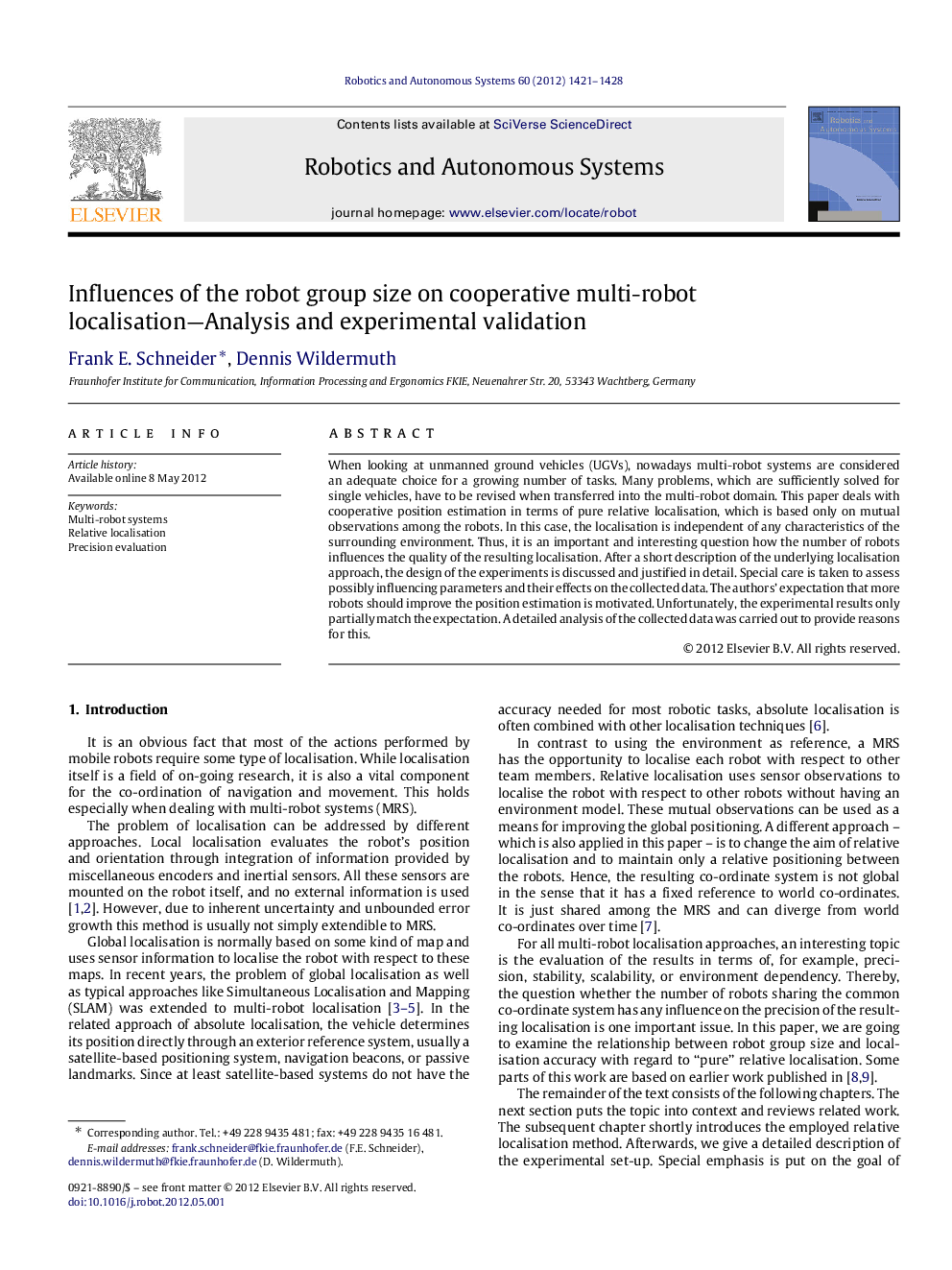| Article ID | Journal | Published Year | Pages | File Type |
|---|---|---|---|---|
| 413133 | Robotics and Autonomous Systems | 2012 | 8 Pages |
When looking at unmanned ground vehicles (UGVs), nowadays multi-robot systems are considered an adequate choice for a growing number of tasks. Many problems, which are sufficiently solved for single vehicles, have to be revised when transferred into the multi-robot domain. This paper deals with cooperative position estimation in terms of pure relative localisation, which is based only on mutual observations among the robots. In this case, the localisation is independent of any characteristics of the surrounding environment. Thus, it is an important and interesting question how the number of robots influences the quality of the resulting localisation. After a short description of the underlying localisation approach, the design of the experiments is discussed and justified in detail. Special care is taken to assess possibly influencing parameters and their effects on the collected data. The authors’ expectation that more robots should improve the position estimation is motivated. Unfortunately, the experimental results only partially match the expectation. A detailed analysis of the collected data was carried out to provide reasons for this.
► This paper deals with relative position estimation in robot groups. ► The relation between the number of robots and the localisation precision is examined. ► Relevant parameters of the simulation environment are discussed and justified. ► The resulting localisation is consistently precise in all tested cases. ► More robots only reduce the variation, not the mean of the localisation error.
